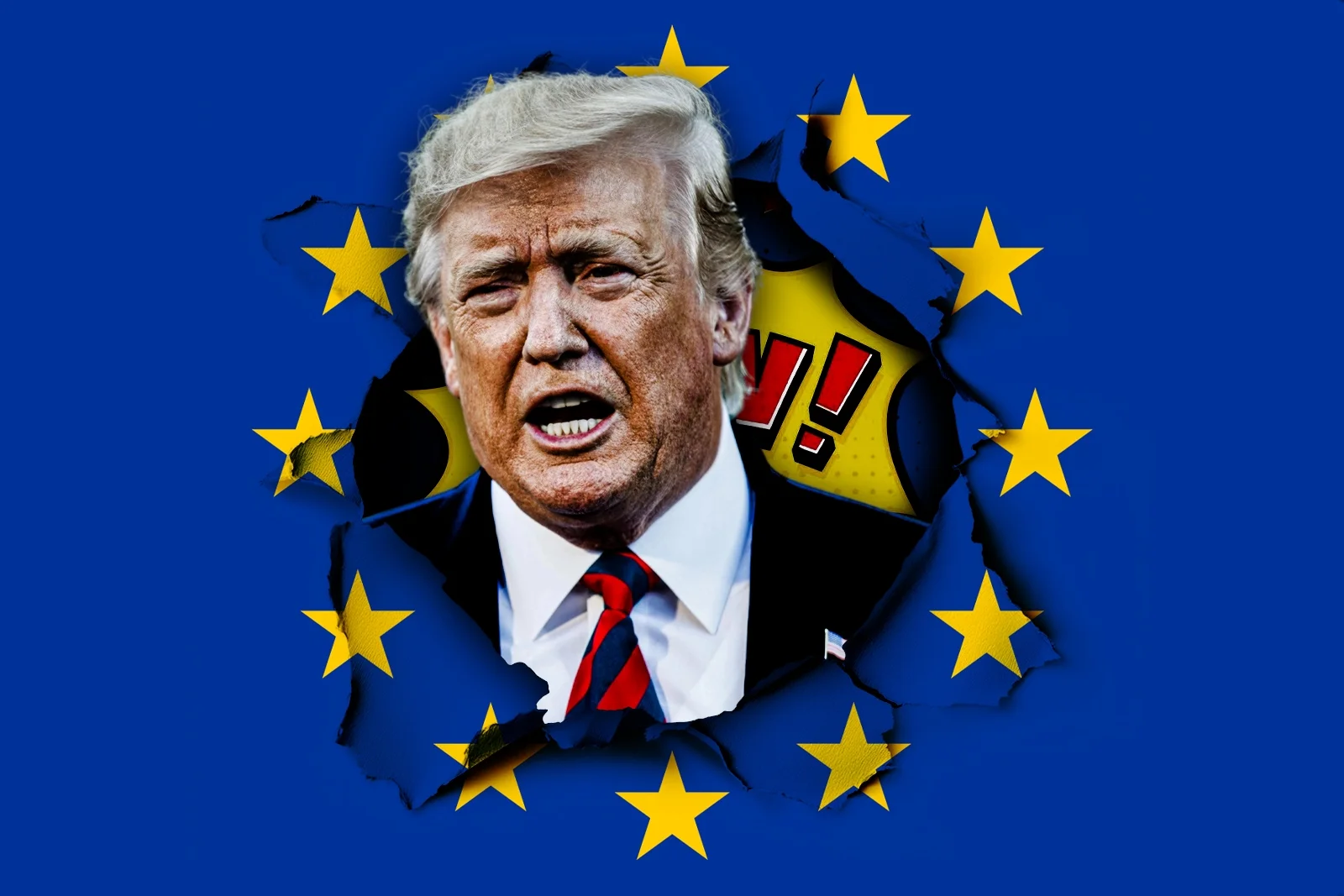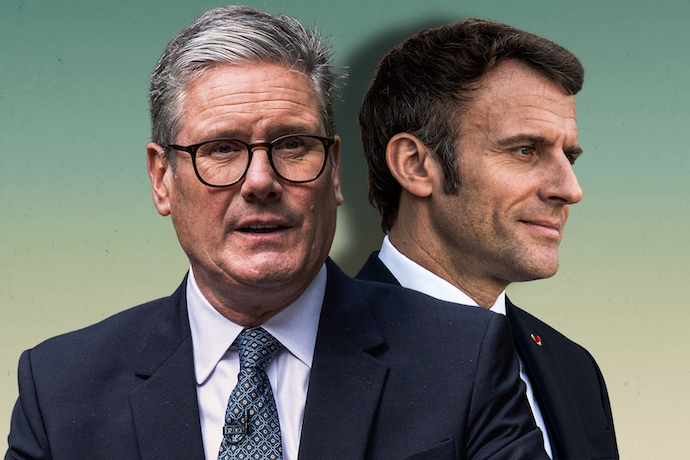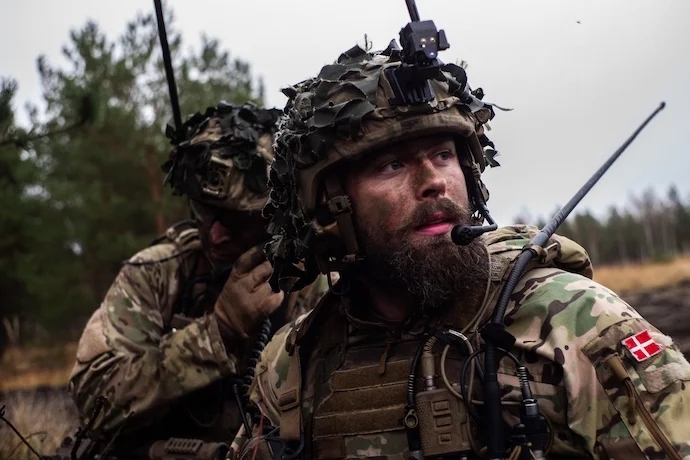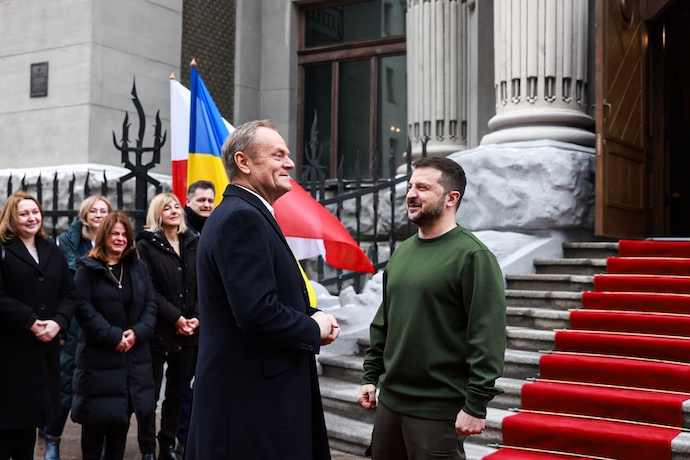
With America Normalizing Russia, an Emerging European Coalition Takes Shape
A second Trump administration is ringing alarms across Europe not heard since the end of the Second World War. With a sympathetic—and at times overtly pro-Russian—posture, the United States is increasingly seen on the continent as an unreliable ally.
Having now indefinitely cut military aid and intelligence sharing with Ukraine, Europe is being forced to step up or risk facing direct Russian confrontation should Moscow succeed in forcing Kyiv to capitulate. Yet, doubts remain over whether Europe can fully rearm, establish a new defense bloc, and provide troops—if necessary—to defend the continent from Russian aggression.
President Donald Trump is executing a sharp reversal of conventional American foreign policy, driven primarily by the populist rhetoric of his Make America Great Again campaign for the presidency. Viewing Europe as overly dependent and Ukraine as a costly burden, Washington is demanding hundreds of billions in mineral rights from Kyiv and is reconsidering its commitment to NATO’s Article 5 mutual defense clause.

The administration’s evident disdain for NATO allies is perplexing, considering the only time Article 5 has ever been activated was to defend the United States in the wake of the September 11th attacks. Countries not even NATO members at the time—such as Finland, Sweden, Australia, New Zealand, Georgia, Japan, Jordan, and even Ukraine—rallied to America’s defense simply because it was the right thing to do.
As Trump signals a willingness to normalize relations with Russia—potentially even reopening Nord Stream 2—Europe now views both the Kremlin and the administration as hostile actors, forming a deeply concerning partnership. In response, European leaders have convened a series of emergency meetings, including a major summit in London, to discuss a proposed peace plan and troop deployments in Ukraine. Notably, Turkey is becoming a key guarantor of Ukrainian security, drawing on its growing soft power and the strength of one of NATO’s most capable militaries.
Amid the growing rift between the United States and Europe, the U.S. has suspended intelligence sharing and Maxar satellite imaging—an action that will severely impact Ukraine’s ability to track Russian missile launches and troop movements. France, anticipating further decoupling, is in talks to deploy Eutelsat coverage over Ukraine if the administration cancels Starlink support.
Meanwhile, British Prime Minister Keir Starmer and French President Emmanuel Macron are finalizing a peacekeeping proposal that would send substantial French and British troop contingents to Ukraine. Other unnamed European countries are expected to join this coalition, and Turkey has signaled interest in participating in the plans.
A subtle but revealing comment from Vice President JD Vance regarding the proposed force has only deepened the growing diplomatic divide between the United States and Europe—particularly with France and the UK, whose militaries have endured hundreds of casualties while serving alongside U.S. forces in conflicts over the past several decades.

NATO’s eastern flank—including Estonia, Latvia, Lithuania, Romania, and Poland—comprises some of the alliance’s top defense spenders relative to GDP and is aggressively bolstering its defenses, given its proximity to potential Russian aggression following any Ukrainian collapse. Poland, rapidly evolving into Europe’s new military and technological powerhouse, is now exploring the possibility of developing nuclear weapons, according to a recent statement by President Donald Tusk in response to Russia’s growing threats.
Though the war in Ukraine remains stagnant, and both Kyiv and Moscow have depleted significant military resources, Europe still has a window to shift the momentum and weaken Russia to the point that it no longer poses a threat. However, the continent’s largest challenges will be its political will, its ability to sustain long-term efforts, and a comprehensive reassessment of national security strategies.
Ukraine’s armed forces will require millions of artillery shells to keep pace with the volume supplied to Russia by North Korea, as well as crucial air defense systems, which could become scarce without continued U.S. military aid. A dramatic scale-up in arms production and the reopening of weapons manufacturing facilities must become immediate European priorities.
European lawmakers must also rethink their defense postures, replacing bureaucratic inertia with decisive action. Wars are won with logistics, and NATO members in Europe must become self-sufficient—holding enough artillery reserves to sustain operations over several years. Europe must prepare for the economic demands of war, especially as Russia’s wartime economy begins to outpace the continent’s peacetime systems.
Intelligence sharing must likewise become a top priority. With the U.S. displaying signs that it cannot be trusted with critical information that could be leaked to Russia—European allies must close ranks. Britain and France, home to two of the world’s leading intelligence services, are well-positioned to lead a pan-European intelligence initiative.
This is also the moment for Europe to grow its military capabilities and gain essential combat experience amid the looming possibility of direct conflict with Russia. Alongside the planned Franco-British peacekeeping effort, individual European nations should dispatch special forces and intelligence operatives to Ukraine to gain battlefield data and hard-won insights—knowledge that can be brought back to conventional forces to inform preparations for a future war.
Poland is building itself into Eastern Europe’s defensive bulwark, while Finland has long maintained contingency measures and may become the first line of defense in the North. A joint Nordic Air Command—comprised of Finland, Sweden, Denmark, and Norway—could serve as a critical bloc against Russian airpower.
European armed forces must also lay the groundwork for wider civilian participation in national defense. Poland and Finland have provided compelling examples of military expansion through civil service engagement. Germany and Denmark are following suit, expanding their forces to prepare for any scenario that may arise.

Europe’s preparations for a self-sustaining military bloc present a double-edged sword for the United States. On one hand, greater European security autonomy allows Washington to pivot toward threats in the Indo-Pacific. On the other, the Trump administration’s treatment of allies could backfire on the United States for years—perhaps decades—to come.
By conditioning and coercing Ukraine over military aid, Washington risks severely damaging its global reputation as a dependable ally. If the U.S. can strong-arm Kyiv now, what’s to stop it from doing the same to any European nation that happens to fall out of political favor in Washington?
Simultaneously, a growing European defense industry could edge out American firms from their largest markets, leading to the loss of hundreds of billions in defense contracts—and with them, American jobs. Trump’s plan to shift U.S. forces from Germany to Hungary further underscores a troubling shift in U.S. priorities—signaling a preference for autocratic governments over democratic allies, a move that will likely deepen global skepticism of American leadership.
Ukraine, notably, once held nuclear weapons but surrendered them in exchange for American security guarantees. In the face of current U.S. indecision and perceived betrayal, a new wave of nuclear proliferation may be on the horizon. Countries are now learning that treaties may not matter if deterrence is the only reliable safeguard—raising the specter of mutually assured destruction.
President Donald Tusk of Poland has already called for nuclear deterrence capabilities. Meanwhile, in Asia, Japan and South Korea—especially Seoul—could pursue nuclear armament as a hedge against North Korea, particularly as Trump stokes tensions by falsely claiming that Japan “doesn’t protect” the U.S., despite the fact that the American-authored Japanese constitution prohibits Tokyo from maintaining a traditional standing military.
If the Trump administration continues its ambiguous and adversarial approach to alliances, the result will be a deep reassessment of strategic partnerships both in Europe and Asia. The American defense industry will suffer, but so too will U.S. soft power—the intangible, yet crucial, asset that has underpinned global leadership since 1945. In the vacuum left behind, no country stands to benefit more than China.
